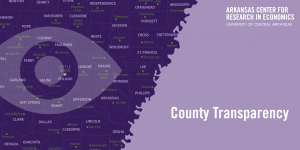By Mavuto Kalulu
Kudos to the Faulkner County Quorum Court, the legislative body of Faulkner County government.
Before the pandemic, on August 21, 2018, it enacted Ordinance 18-16 to enhance the transparency of its public meetings by posting recordings on the county website. This allows citizens to listen or watch what transpired in the quorum court. This has had important implications, especially with the unexpected events of the past year.
Only four residents were physically present at the last regular quorum court meeting of 2020, held on December 15. Of the 13 Justices of the Peace who make up the court, only two were physically present. The small number was due largely to the COVID-19 pandemic. People are wary of catching or spreading the virus, even for important county business.
Three years ago, this level of participation would have been worrisome, because it would have meant roughly 0.004 percent of Faulkner’s adult population (roughly 96,000) witnessed quorum court deliberations. But thanks to the commitment of elected officials to be more transparent with their deliberations and outcomes through the use of web technology, we no longer have to worry about that.
Thus, even though one did not attend the last quorum court meeting of 2020 in person, one can know that the quorum court passed ordinance 20-29 to amend the 2020 operating budget, which was previously established by ordinance 19-48 in December 2019. The amendment passed unanimously, with all 13 Justices of the Peace voting in favor of the amendment. I know this because I watched the video recording of this meeting at my own convenience.
A look at the ordinance itself, which is also published on the Faulkner County website, shows the 12 amendments that were made. For example, a sum of $10,000 was set aside from the County General Fund to the Election Commission for postage ($7,000) and other professional services ($3,000).
Web technology increases residents’ participation, allowing residents to contribute to these important discussions. It also provides oversight for elected officials. Knowing that their deliberations are being scrutinized by residents, elected officials are more likely to act in our interests. This leads to the prudent allocation of resources.
A 2017 “Public Administration Review” research article by Maria Cucciniello, Gregory Porumbescu, and Stephen Grimmelikhuijsen, “25 Years of Transparency Research: Evidence and Future Directions,” reveals that besides increasing participation, transparency improves financial management and reduces corruption.
The foresight of our elected officials to live stream and record these meetings has allowed residents to stay informed when other counties in the state are lagging behind.
According to an Arkansas Center for Research in Economics transparency report, Faulkner County is one of the nine counties that post recorded videos of court meetings. Overall, Faulkner’s transparency has improved from 2018 to 2020. In 2018, the County published about 37 percent of its important public information online. In 2020, it published almost double that, at 68 percent.
I applaud the progress Faulkner County public officials have made and encourage them to continue improving transparency so we have access to the remaining 32 percent of public information. Faulkner County residents deserve to be informed, and the technology is there to ensure that they do.

